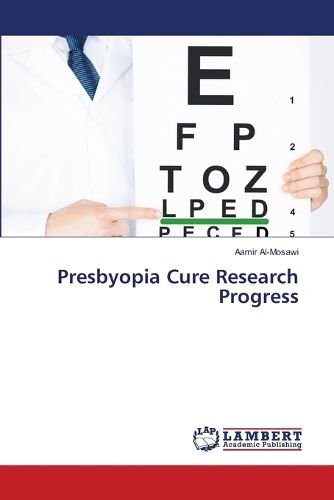Readings Newsletter
Become a Readings Member to make your shopping experience even easier.
Sign in or sign up for free!
You’re not far away from qualifying for FREE standard shipping within Australia
You’ve qualified for FREE standard shipping within Australia
The cart is loading…






This title is printed to order. This book may have been self-published. If so, we cannot guarantee the quality of the content. In the main most books will have gone through the editing process however some may not. We therefore suggest that you be aware of this before ordering this book. If in doubt check either the author or publisher’s details as we are unable to accept any returns unless they are faulty. Please contact us if you have any questions.
Presbyopia, commonly known as "old man's eye disease," is a condition that leads to difficulty seeing near objects due to changes in the eye's lens. Historical explanations date back to Aristotle, with significant contributions from figures like Rene Descartes and Ernst Bruecke, who helped identify the ciliary muscle's role in accommodation. Benjamin Franklin devised the first bifocals in the 1780s as a solution for presbyopia. In the 19th century, advancements included the development of eye charts by Heinrich Kuechler and Eduard Jaeger for assessing near vision. Hermann von Helmholtz later explained that presbyopia results from the loss of lens elasticity due to aging.Presbyopia, an age-related decline in near vision, has driven the search for effective and convenient pharmaceutical therapies. Topical parasympathomimetic agents, particularly pilocarpine, have emerged as promising treatments for this condition. The aim of this book is to provide an understanding and an overview of presbyopia research progress.
$9.00 standard shipping within Australia
FREE standard shipping within Australia for orders over $100.00
Express & International shipping calculated at checkout
Stock availability can be subject to change without notice. We recommend calling the shop or contacting our online team to check availability of low stock items. Please see our Shopping Online page for more details.
This title is printed to order. This book may have been self-published. If so, we cannot guarantee the quality of the content. In the main most books will have gone through the editing process however some may not. We therefore suggest that you be aware of this before ordering this book. If in doubt check either the author or publisher’s details as we are unable to accept any returns unless they are faulty. Please contact us if you have any questions.
Presbyopia, commonly known as "old man's eye disease," is a condition that leads to difficulty seeing near objects due to changes in the eye's lens. Historical explanations date back to Aristotle, with significant contributions from figures like Rene Descartes and Ernst Bruecke, who helped identify the ciliary muscle's role in accommodation. Benjamin Franklin devised the first bifocals in the 1780s as a solution for presbyopia. In the 19th century, advancements included the development of eye charts by Heinrich Kuechler and Eduard Jaeger for assessing near vision. Hermann von Helmholtz later explained that presbyopia results from the loss of lens elasticity due to aging.Presbyopia, an age-related decline in near vision, has driven the search for effective and convenient pharmaceutical therapies. Topical parasympathomimetic agents, particularly pilocarpine, have emerged as promising treatments for this condition. The aim of this book is to provide an understanding and an overview of presbyopia research progress.